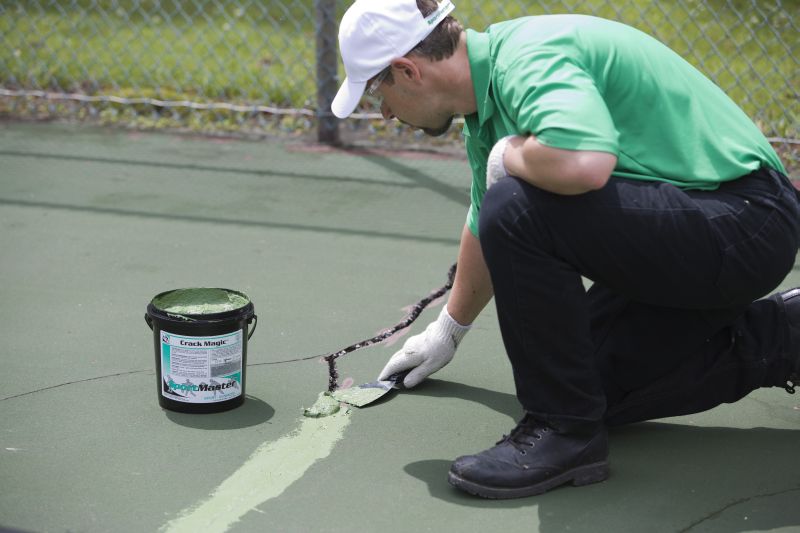Tennis Court Cracking & Warping
Why does your Tennis Court Crack & Warp?
Asphalt Courts
Asphalt courts eventually crack & warp because the surface becomes brittle over time. With roads and driveways, they get the nearly constant weight of traffic and vehicles on top of them, and this helps keep the asphalt pliable, delaying the development of cracks. Tennis courts, on the other hand, only get light foot traffic, so they’re more prone to cracks & warping. Nothing in this world is truly static, and that includes the ground underneath a tennis court. If and when the ground shifts, that’s when cracks can develop. Extreme temperature changes can also help cracks flourish, along with rain & icy which can occur in the Adelaide hills & some regional areas.
Concrete Courts
Compared to asphalt, concrete is a harder substance so it’s less likely to crack. That said, concrete can and does crack, eventually. However, if post-tensioned concrete is used, the compressive force that’s being applied to the concrete slab helps prevent cracks.
While cracks will ultimately happen, they can be proactively dealt with, such that they’re not allowed to expand and wreak havoc on the entire surface area of a court.
How do we fix our tennis court surface?
Resurfacing
(Option 1)
There are several ways in which we can fix the cracking & warping in the tennis court itself. The easiest and least expensive method is resurfacing the area.
This is a normal process in the life of your tennis court and is best addressed as soon as the court starts to show signs of cracking & Warping. The longer it is left the worse it will become.
“Resurfacing leaves the existing substrate, typically asphalt or concrete, intact. The existing surface is thoroughly cleaned by pressure washing. Cracks are then filled — with the understanding that they may reappear or lengthen beyond the current repair that was done.
There are several different products that can be used to fill the cracks so please talk to us about which ones we can use on your court. There are environmentally friendly options these days too which we recommend using first as well.
Mid Level Repairs
(Option 2)
If resurfacing is considered the lower end of tennis court rehab work, then membranes, stone screenings and overlays are the middle level, and may be advisable for badly cracked courts. A geotextile membrane or a layer of stone screenings is laid over the old court, followed by an overlay of asphalt or reinforced concrete, installed in lifts.
Finally, the court is recoated. This is the middle ground option compared to a reconstruction of the whole court. This method is less expensive than reconstruction but more than resurfacing. Essentially, it allows a new court to be built on top of an old base, without having the cracking or instability of the old court mirrored in the new facility.
If this method is chosen we take great care to make sure the problem areas from the old court are reinforced under the new court to make sure the same issue doesn’t occur. However, the court will crack again in time regardless. As mentioned above, heat, cold, rain, ground moving will all make the court change over time.
Reconstruction
(Option 3)
If the low-level and even mid-level fixes won’t work, then, a reconstruction option is required. If the tennis court has large structural cracks throughout the slab, either in parts or the whole court then reconstruction will be required.

